This article will show you the process of creating a daily system image for Windows Server 2012 R2. For this process, you will need an external hard drive. The size you will need will vary user to user.
Here is how to create the backup:
1. Click on the Start button, typically found at the lower left corner of the screen.
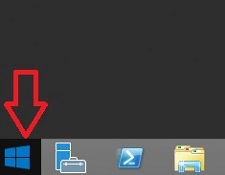
2. From the Start screen, type in Windows Server Backup.
There is no bar to type into, just start typing. It will automatically type into the search bar. Click on Windows Server Backup on the right side.
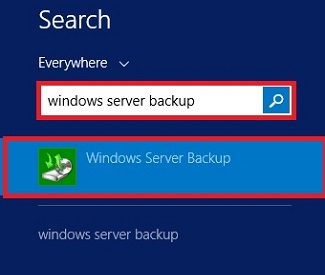
3. This will open a Windows Server Backup pop-up window. On the left hand side of this window, click on Local Backup.
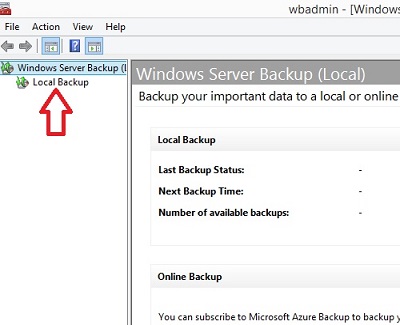
4. A screen with scheduled backups will appear. It should be blank if nothing has been set up prior.
On the right hand side, click on Backup Schedule.
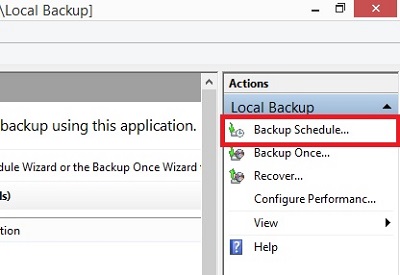
5. This will open the Backup Wizard window. At the bottom of this window, click Next.
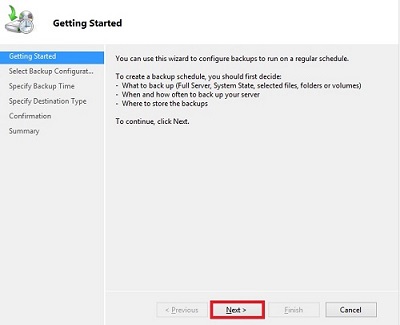
6. On the next screen, it will ask how the backup needs to be done. It is recommended to do a Full Server backup. Click Next to continue.
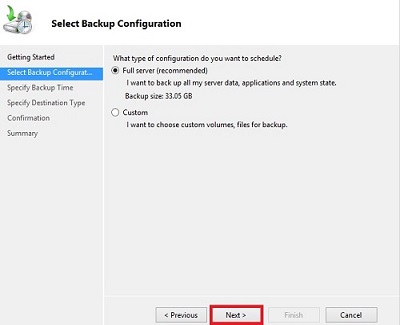
7. This will bring up options on what times to do the backups. In this example, it is set to backup only once a day. Select the time you'd like it to be backed up at and then click Next.
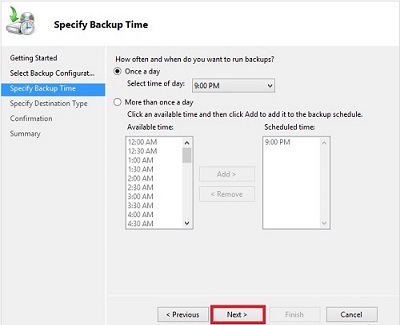
8. On the Specify Destination screen, choose a location to save the backups to. In this example, the backup is saved to an external drive. Click Next to continue.
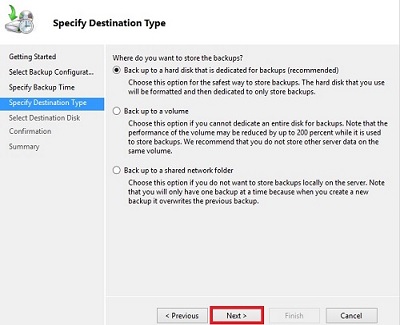
9. On the next screen, select the drive location where the backup is being saved. Once selected, click Next.
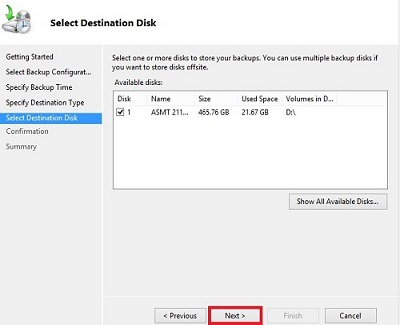
10. This will bring up an alert window saying that this will format the hard drive, erasing all data on the drive. Click Yes to continue.
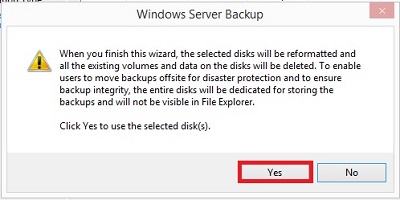
11. This will bring up a final confirmation screen. If everything is correct, click on Finish to continue.
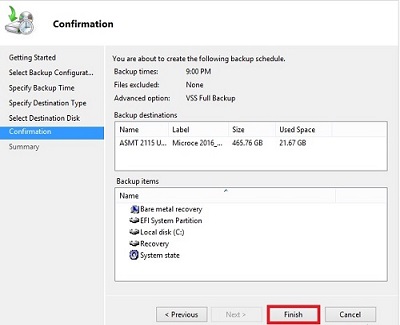
12. Now the hard drive you selected will start formatting. This can take a few minutes.
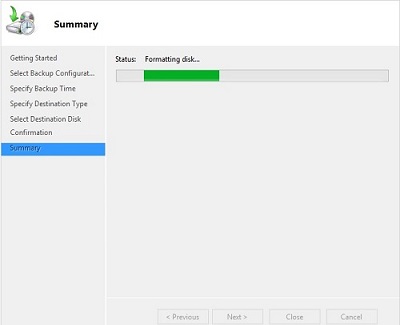
13. Once completed, a completion screen will appear. Click Close.
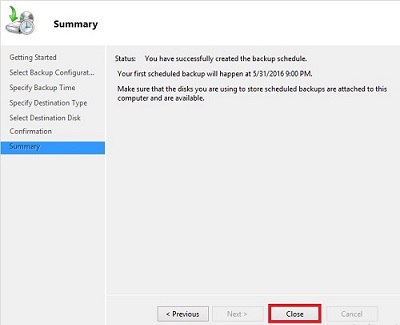
14. You will be returned to the Windows Server Backup window. This will show you information about the backups for your server. It will show the last backup that was done as well as the time for the next backup.
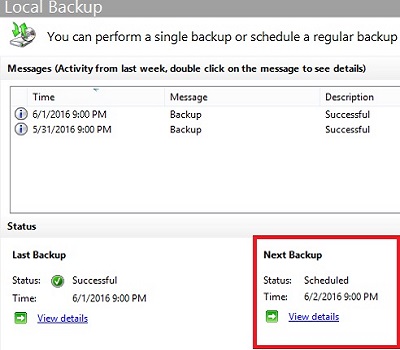
Now the server is now set up to run Windows Backups on a daily schedule.